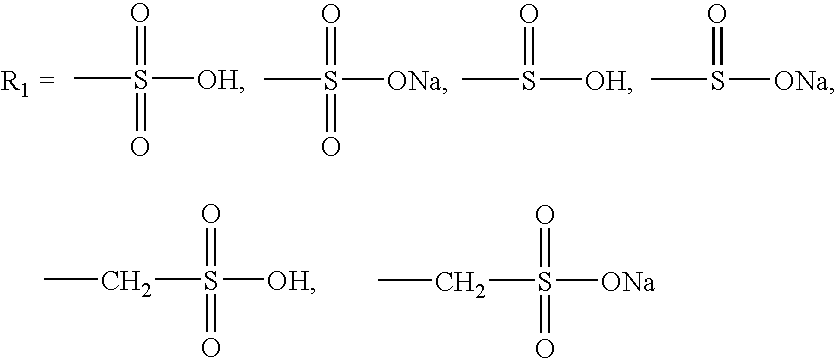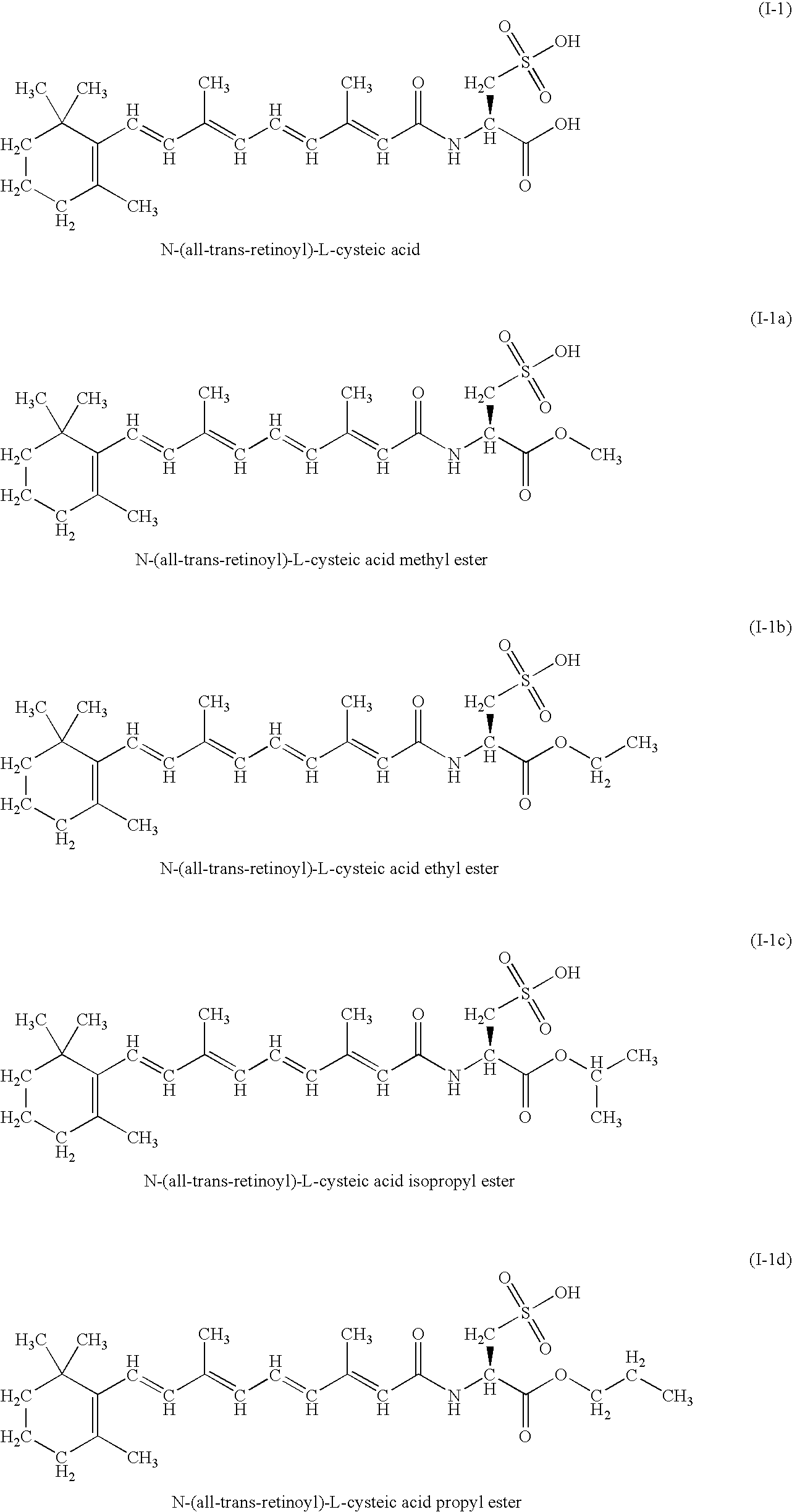Therapeutic compounds
a technology of doxorubicin and doxorubicin combination, which is applied in the field of therapeutic compounds, can solve the problems of complex efficacy of doxorubicin, low therapeutic efficacy of doxorubicin in combination regimens for breast cancer treatment, and low pharmacological activity of doxorubicin, so as to improve the therapeutic efficacy and enhance the pharmacological activity.
- Summary
- Abstract
- Description
- Claims
- Application Information
AI Technical Summary
Benefits of technology
Problems solved by technology
Method used
Image
Examples
example 1
[0091] Synthesis of N-retinoyl-L-cysteic acids esters and amides and N-retinoyl-L-homocysteic acids esters and amides
[0092] Synthesis of esters of L-cysteic and L-homocysteic acids. Thionyl chloride (3 mmol, 0.219 ml) was added to the 50 ml of an appropriate alcohol while stirring followed by L-cysteic acid monohydrate (1 mmol, 187 mg) or L-homocysteic acid (1 mmol, 183 mg) after 15 min, whereupon the mixture was refluxed for 48 hrs. The alcohol was evaporated under reduced pressure and the residue recrystallized from ethanol. Yields in the interval of 85-95% were achieved for all esters.
[0093] Synthesis of amides of L-cysteic and L-homocysteic acids. 10 ml of aqueous solution of an appropriate amine (28% solution of NH.sub.3 or 40% solution of methylamine or dimethylamine in water) was added to a solution of a methyl ester of the appropriate acid (1 mmol) in 5 ml of water and the resulted solution was allowed to stay for 2-7 days. The solvent and an excess of the amine were removed...
example 2
[0130] Evaluation of the Cytotoxicity of Compound I-1a in Cultures of Human Breast Adenocarcinoma MDA-MB-231 Cell Line Related to the Final Concentration of Compound I-1a in the Cultures
[0131] An initial solution of compound I-1a (1 mg / ml) was prepared by dissolving the dry substance in saline. From this solution, the working solutions of compound I-1a in MEM with 5% FBS were prepared in different concentrations by means of consecutive dilutions for adding to the cultures.
[0132] Cultures of MDA-MB-231 cells were treated with drug solutions on day 1 after seeding. Aliquots of the working solutions (2 .mu.L) in different concentrations of compound I1a were added to 200 .mu.L cultures to a final concentration of compound I-1a from 10.sup.-9 to 10.sup.-7 mol / L in the cultures. In the control cultures, 2 .mu.L medium with 5% FBS was added as solvent control. After cultivation for two consecutive days, the number of viable cells in the cultures was counted and the extent of growth inhibit...
example 3
[0136] Evaluation of the Cytotoxicity of Compound I-1b in Cultures of Human Breast Adenocarcinoma MDA-MB-231 Cell Line Related to the Final Concentration of Compound I-1b in Cultures
[0137] An initial solution of compound I-1b (1 mg / ml) was prepared by dissolving the dry substance in saline. From this solution, the working solutions of compound I-1b in MEM with 5% FBS were prepared in different concentrations by means of consecutive dilutions for adding to the cultures.
[0138] Cultures of MDA-MB-231 cells were treated with drug solutions on day 1 after seeding. Aliquots of working solutions (2 .mu.L) in different concentrations of compound I-1b were added to 200 .mu.L cultures to a final concentration of compound I-1b from 10.sup.-9 to 10.sup.-7 mol / L in the cultures. In the control cultures, 2 .mu.L of medium with 5% FBS was added as solvent control. After cultivation for two consecutive days, the number of viable cells in cultures was counted and the extent of growth inhibition of M...
PUM
| Property | Measurement | Unit |
|---|---|---|
| Molar density | aaaaa | aaaaa |
| Molar density | aaaaa | aaaaa |
| Fraction | aaaaa | aaaaa |
Abstract
Description
Claims
Application Information
 Login to View More
Login to View More - R&D
- Intellectual Property
- Life Sciences
- Materials
- Tech Scout
- Unparalleled Data Quality
- Higher Quality Content
- 60% Fewer Hallucinations
Browse by: Latest US Patents, China's latest patents, Technical Efficacy Thesaurus, Application Domain, Technology Topic, Popular Technical Reports.
© 2025 PatSnap. All rights reserved.Legal|Privacy policy|Modern Slavery Act Transparency Statement|Sitemap|About US| Contact US: help@patsnap.com



